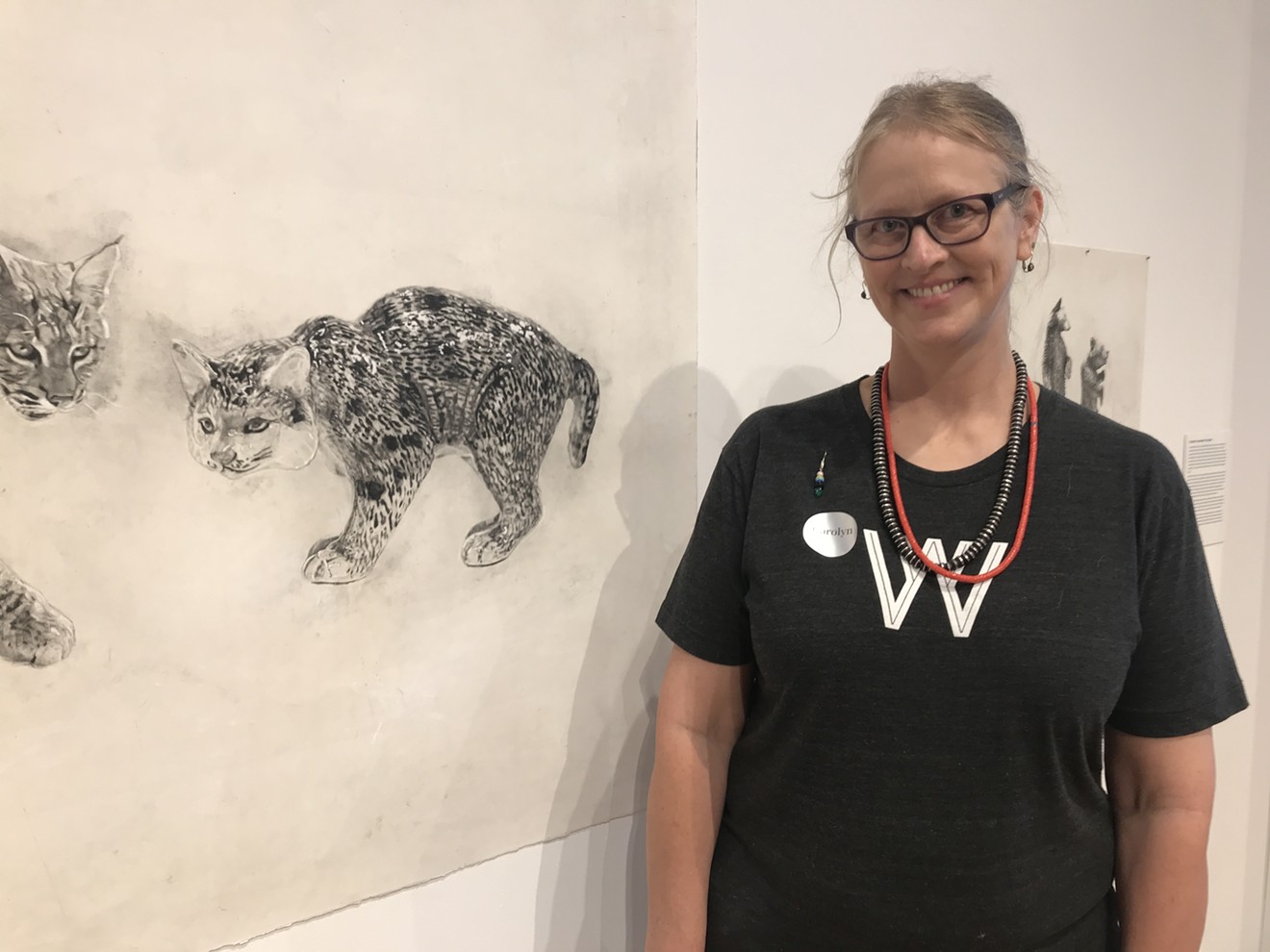Artist Michael Twenty-three turned to crowdsourcing in August, asking for funds to help him deal with back pain. At the time, Twenty-three didn’t have health insurance. So he set up a GoFundMe account, explaining online that he’d hurt his back moving a table during an art fair several months before. Twenty-three raised over $1,200 after sharing that he needed money for imaging and chiropractic care.
“We didn’t have health insurance for 10 years,” he says. “It has an accumulated cost because we’re used to having more downtime due to illness.” Twenty-three lives in Miami, Arizona, with his wife, Joanna, who’s also an artist. Together, they run a local arts space and present an annual arts festival each spring. They’ve purchased insurance, but it won’t kick in until January.
Like plenty of other artists, they’re hoping they won’t get sick or need medical attention.
Health insurance is a huge concern for creatives, according to Kesha Bruce. She’s a studio artist and painter who recalls years spent hopscotching between various insurance plans and long stretches of living without coverage. “You have this sense that you’re flying without a net,” Bruce says. “It’s a scary place to be.”
A significant number of artists face health issues related to their art practice, according to CERF+, a national organization that helps artists facing natural disasters or other challenges. The group notes that 62 percent of artists perform physically challenging work, and 64 percent report injuring themselves in their studio. Over 40 percent say they experience chronic pain.
Naturally, artists aren’t the only ones struggling to pay for health care.
Arizona has one of the highest rates of uninsured people in the country, according to Swapna Reddy, an assistant clinical professor at ASU whose expertise includes health policy. And the rate has ticked upward in recent years.
“When people don’t have health insurance, they dip into their savings, and emergency rooms get over-utilized,” Reddy says. Sometimes the consequences are dire, says Phoenix artist Carolyn Lavender. “If you don’t own anything, you can get state assistance,” she says. “If you have something to lose, like a house, you’ll lose it.”
Lavender was diagnosed last year with breast cancer. She knows several additional artists who’ve faced the disease as well. “My husband has excellent insurance, so that’s what got us through it.” But Lavender realizes a lot of artists don’t have that luxury because insurance is typically tied to having a full-time job.
“The creative class has to either work full time to get health benefits or do their creative job full time and go without insurance,” Lavender says. “Working 40 hours a week doesn’t leave enough time to be a creative person.”
She’s hoping that public policy will shift, so access to health care becomes universal. “People have to pay attention to state candidates, not just the presidential election,” she says. Candidates differ on health care issues, so artists have to pay attention to politics, she says. “We all need to vote.”
Reddy agrees, adding that several provisions of the Affordable Care Act are at risk, including coverage for pre-existing conditions. “From health care to health insurance, elections have consequences,” she says.
Twenty-three ended up getting health insurance through the Affordable Care Act, the health care law passed in March 2010. “There are all these places that will act as intermediaries, but we just went on the healthcare.gov website and looked around,” he says. “Another easy way for artists to get health care is AHCCCS,” he says. That’s the state agency that runs Arizona’s Medicaid program, which uses income to help determine eligibility.
Some states have artist trade groups or service organizations that help artists find or buy insurance, according to Bob Booker. He’s a longtime arts administrator who previously headed Arizona Commission on the Arts, which works to increase access to the arts throughout the state. Minnesota artists have Springboard for the Arts, for example.
But there’s no parallel in Arizona. Those groups need funding to operate, he says, and Arizona funding is low compared to other states.
Even so, Booker says there are things artists can do to reduce their risk of health complications related to their art practice. Booker serves on the CERF+ board of directors, so he’s familiar with their grants that help artists create healthier workspaces, with equipment like ventilators. There’s also a CERF+ insurance hub online, which links to additional resources for artists.
Mitch Menchaca suggests exploring the Actors Fund, a national organization based in New York that seeks to provide a safety net for performing arts and entertainment professionals in diverse fields, including theater, dance, film, and more. Menchaca heads the Phoenix Office of Arts and Culture.
For Arizona artists considering their options under the Affordable Care Act, there’s a fast-approaching deadline. The enrollment period for 2020 coverage ends on Saturday, December 15.
It’s time to think about future elections, as well. “As we’re entering the presidential election season, it's especially important that creative individuals without employer-based health care stay engaged and on top of the issues,” Reddy says. “What happens in this election could have a big impact on their access to health care.”
[
{
"name": "Air - MediumRectangle - Inline Content - Mobile Display Size",
"component": "18478561",
"insertPoint": "2",
"requiredCountToDisplay": "2"
},{
"name": "Editor Picks",
"component": "16759093",
"insertPoint": "4",
"requiredCountToDisplay": "1"
},{
"name": "Inline Links",
"component": "17980324",
"insertPoint": "8th",
"startingPoint": 8,
"requiredCountToDisplay": "7",
"maxInsertions": 25
},{
"name": "Air - MediumRectangle - Combo - Inline Content",
"component": "16759092",
"insertPoint": "8th",
"startingPoint": 8,
"requiredCountToDisplay": "7",
"maxInsertions": 25
},{
"name": "Inline Links",
"component": "17980324",
"insertPoint": "8th",
"startingPoint": 12,
"requiredCountToDisplay": "11",
"maxInsertions": 24
},{
"name": "Air - Leaderboard Tower - Combo - Inline Content",
"component": "16759094",
"insertPoint": "8th",
"startingPoint": 12,
"requiredCountToDisplay": "11",
"maxInsertions": 24
}
]













